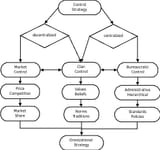Search Results
5/24/2025, 11:51:16 AM
>>95717035
Even with all this mechanized assistants, the Emperor will have absolutely no contact with non-interstellar personnel. His relationship with his magistrates would not be unlike those between the United States President and the mayors and city managers of American cities. To the Galactic Emperor, the starkeepers, each responsible for 100 worlds, will seem much as U.S. citizens appear to their President - with only a very rare audience being granted. Planetary governors are "the rabble."
Organizational specialist studying "control loss theory" say that in tall, human-like galactic organizations, memos would have to travel down through so many channels that most orders from top to bottom levels could be almost totally degraded to noise by they time they arrive. Economist Oliver Williamson devised a simple model to predict how goals generated at the top of a hierarchy are implemented at the bottom after passing down a number of levels in the chain of command.
If each message, on average, passes through a level 95% intact, then Williamson would claim that since orders must change hands 10 times, Sir Roger's Empire is (0.95)10 = 60% effective in carrying out its aims. At 85% per level (Williamson's lower limit based on studies of actual human organizations), effectiveness drops to 20% and only one-fifth of the Emperor's plans for the commoners ever reach fruition.
Even with all this mechanized assistants, the Emperor will have absolutely no contact with non-interstellar personnel. His relationship with his magistrates would not be unlike those between the United States President and the mayors and city managers of American cities. To the Galactic Emperor, the starkeepers, each responsible for 100 worlds, will seem much as U.S. citizens appear to their President - with only a very rare audience being granted. Planetary governors are "the rabble."
Organizational specialist studying "control loss theory" say that in tall, human-like galactic organizations, memos would have to travel down through so many channels that most orders from top to bottom levels could be almost totally degraded to noise by they time they arrive. Economist Oliver Williamson devised a simple model to predict how goals generated at the top of a hierarchy are implemented at the bottom after passing down a number of levels in the chain of command.
If each message, on average, passes through a level 95% intact, then Williamson would claim that since orders must change hands 10 times, Sir Roger's Empire is (0.95)10 = 60% effective in carrying out its aims. At 85% per level (Williamson's lower limit based on studies of actual human organizations), effectiveness drops to 20% and only one-fifth of the Emperor's plans for the commoners ever reach fruition.
Page 1
